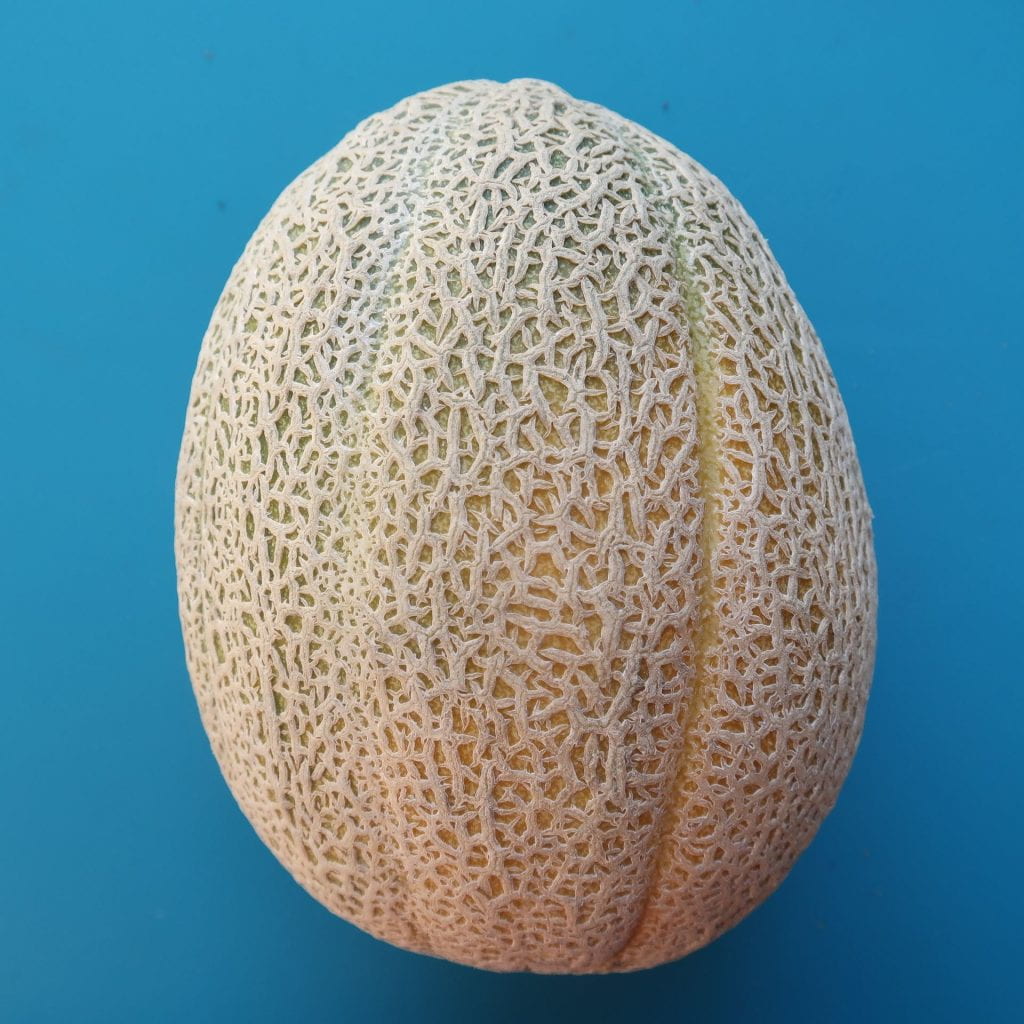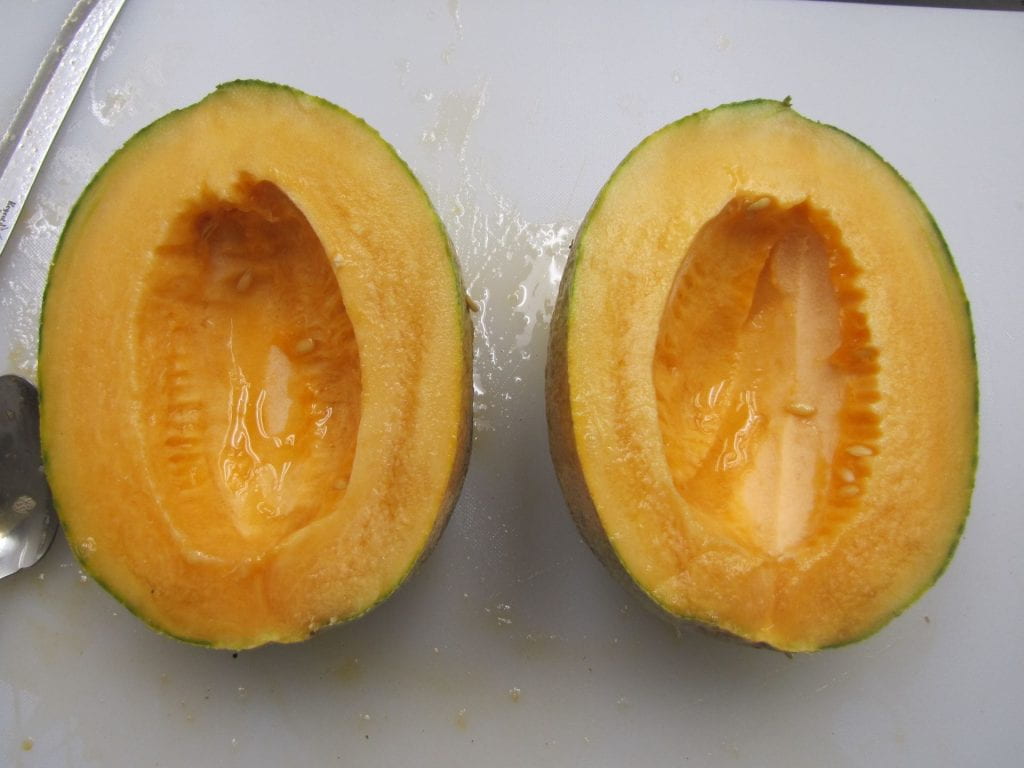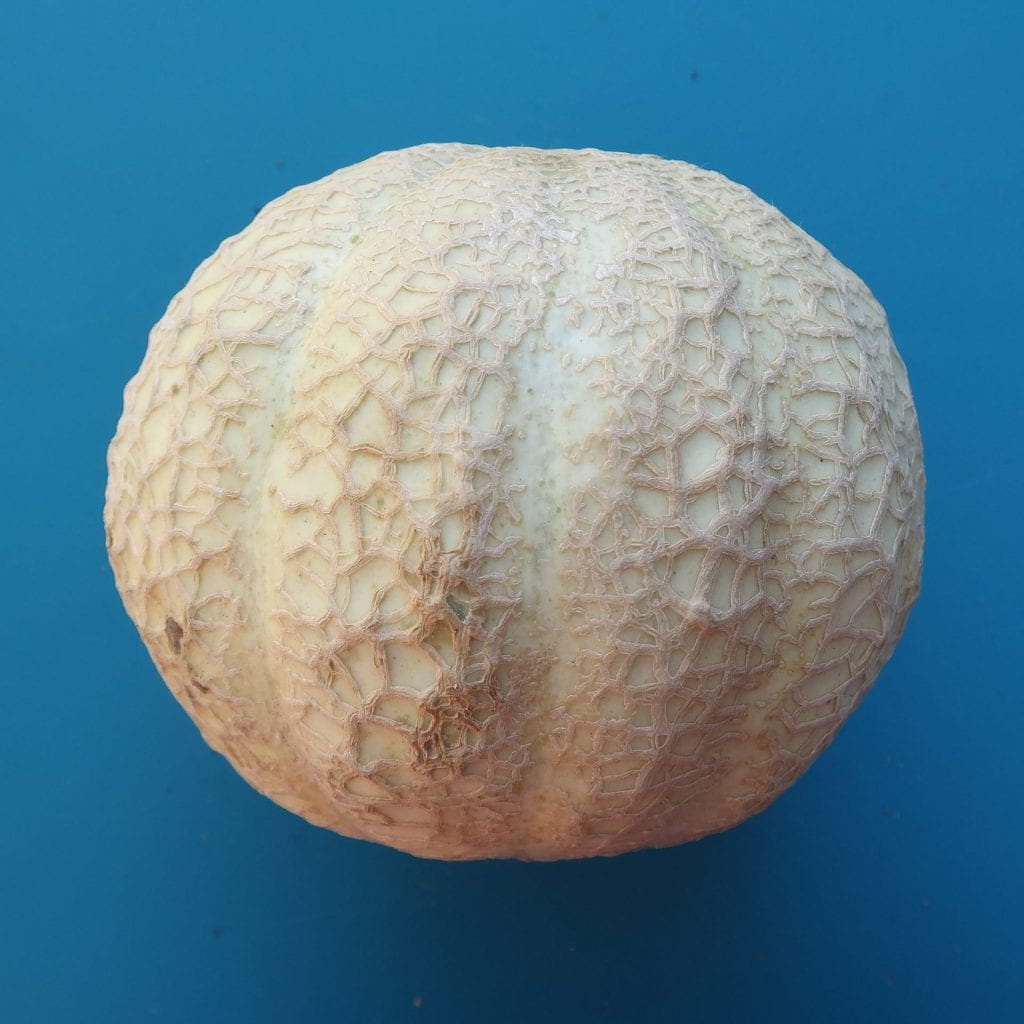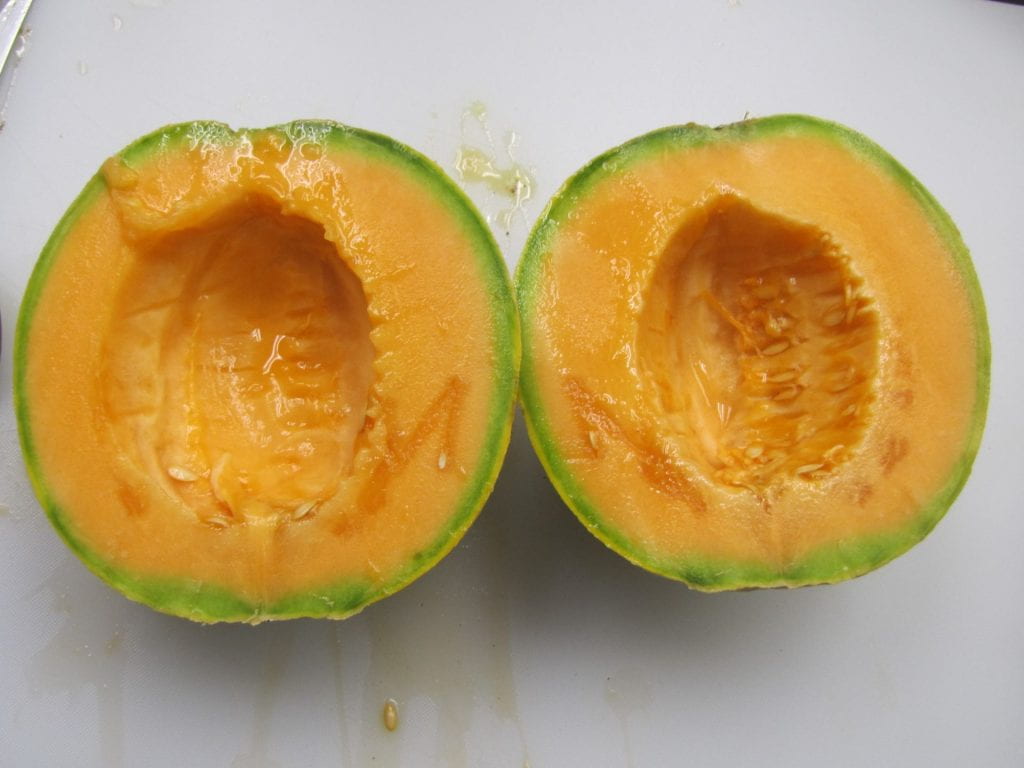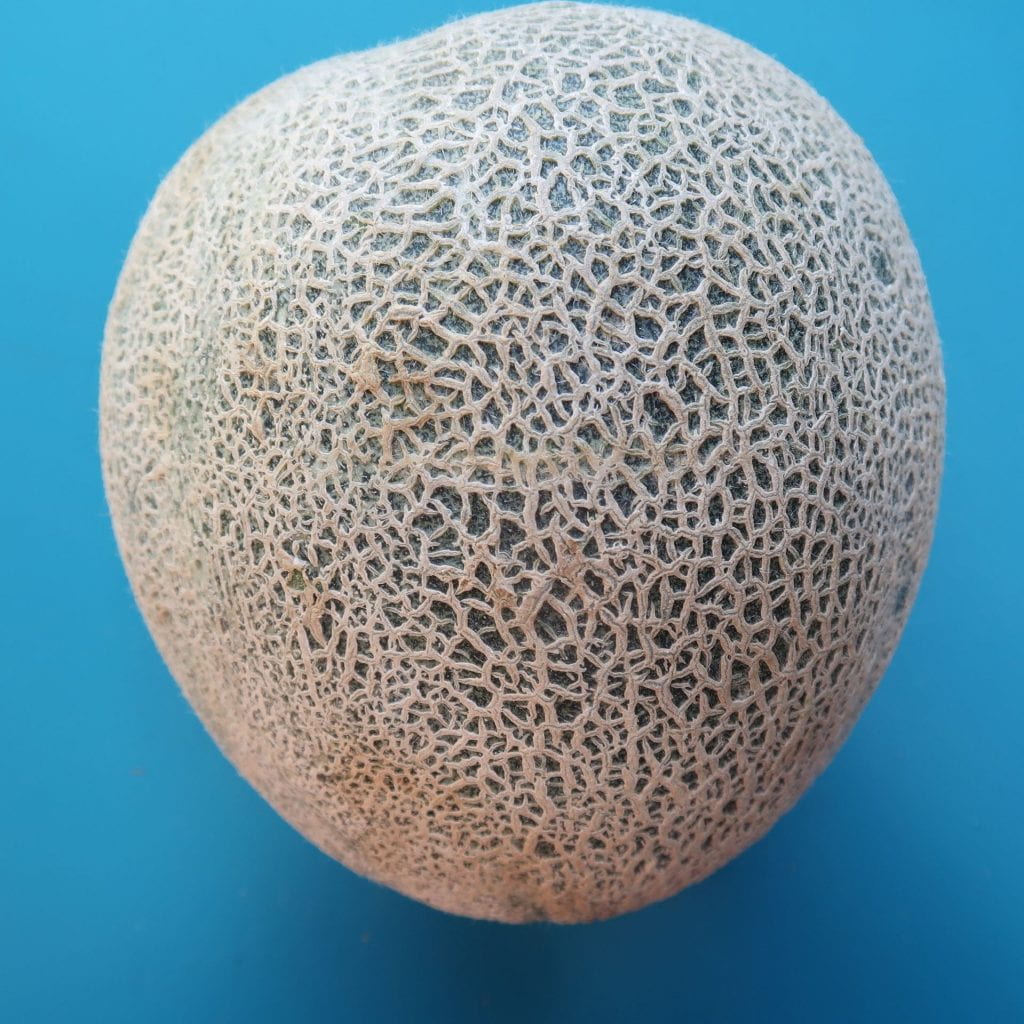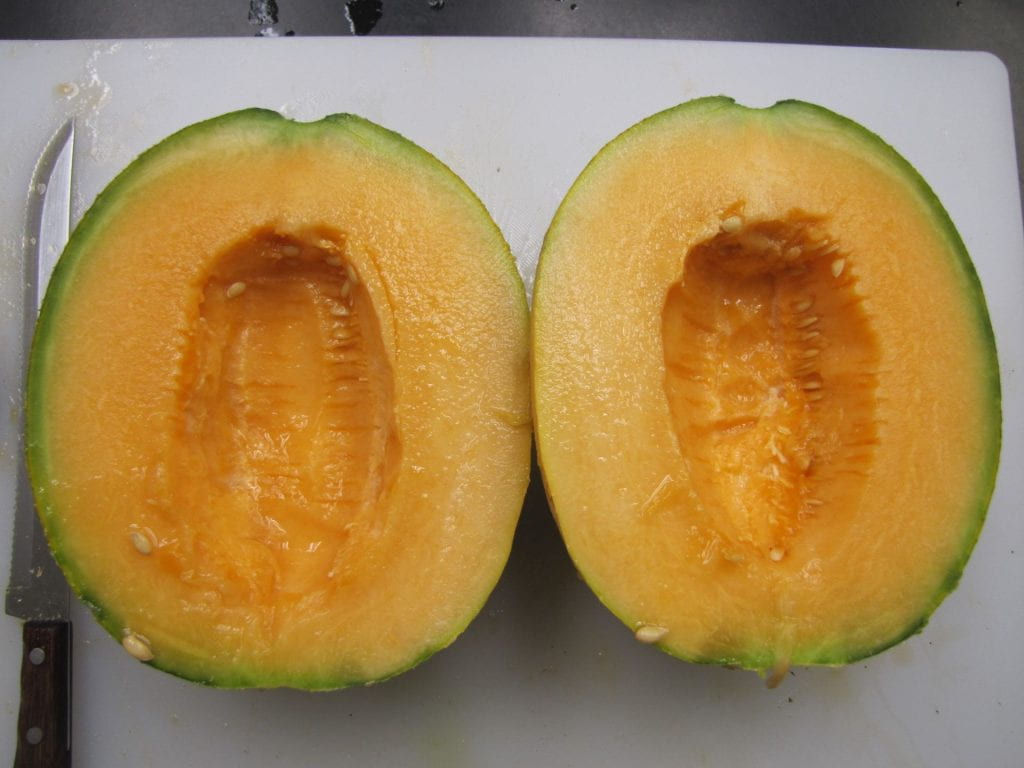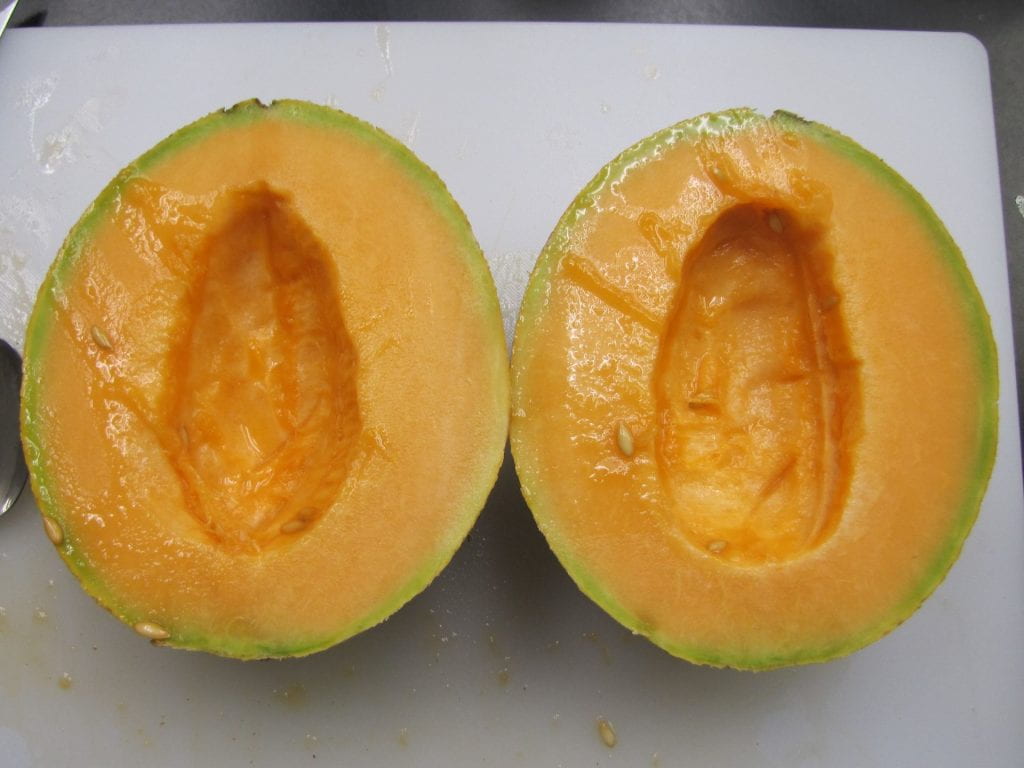This replicated experiment was conducted at LIHREC in 2021.
Topics on this page:
Powdery mildew is the most common disease affecting foliage of cantaloupe crops on Long Island every year. When it is not effectively managed, leaves die prematurely, and as a result fruit has poor flavor and lacks sweetness. Resistant varieties are a more economical management practice than routine fungicide applications. Powdery mildew is recommended managed with an integrated program consisting of fungicides applied to a resistant variety starting when symptoms are first seen. Effective management is expected with fewer applications to a resistant variety by extending the application interval or shortening the treatment period. Additionally, an integrated approach will reduce selection pressure on the pathogen for fungicide resistance, which the pathogen has proven adept at achieving. Trifecta (which was developed at Cornell) and Edisto 47 are cantaloupe varieties with resistance to both powdery mildew and downy mildew. There are several other varieties resistant to powdery mildew. Growing a variety with resistance to both of these common diseases would facilitate being able to extend the fungicide application interval. The goal of this experiment conducted at LIHREC in 2021 was to assess degree of resistance to powdery mildew of Edisto 47 and Trifecta by comparing them to two powdery mildew resistant varieties (Ambrosia and Sugar Rush) evaluated previously and to a susceptible variety. Another experiment was conducted to assess their resistance to downy mildew. In each experiment targeted fungicides were applied to control the other disease. Yield and fruit quality were also examined. It is helpful for growers to know how well new varieties perform in terms of ability to suppress a disease, in order to select a fungicide program to achieve desired level of control, and also to know yield and fruit quality compared to standard varieties to determine whether a new variety is suitable for their operation.
Procedures
Mustard was grown in spring for biofumigation to manage the Phytophthora blight pathogen in the soil before planting the experiment. The field was moldboard plowed on 6 Apr and urea fertilizer (46-0-0) was applied at 80 lb/A N on 7 Apr. Mustard cover crop (Rojo Caliente) was seeded at 10 lb/A by drilling on 9 Apr. On 14 Jun the mustard was flail-chopped, immediately incorporated by disking, and followed by a cultipacker to seal the soil surface; the field could not be irrigated to initiate biofumigation as is recommended, but the soil was moist. Controlled-release fertilizer (N-P-K, 19-10-9) at 525 lb/A (101 lb/A N) was broadcast over the bed area and incorporated. Beds were formed with drip tape and covered with black plastic mulch. Seeds were sown in the greenhouse on 15 June. A waterwheel transplanter was used to make planting holes in the beds and apply starter fertilizer (9-18-9). Seedlings were placed outdoors to harden for a few days before transplanting by hand into the holes in the beds on 6 July. During the season, water was provided as needed via drip irrigation lines. Weeds were managed between the mulched beds by applying herbicide before transplanting and by hand weeding.
Downy mildew and Phytophthora blight were managed by applying Presidio 4 fl oz/A on 16 July, Omega 24 fl oz/A on 23 July, Orondis Ultra 7 fl oz/A on 30 July, 20 August and 3 September, Revus 8 fl oz/A on 14 August, and Ranman 2.75 fl oz/A on 27 August.
Plots were three 8-ft rows spaced 68 in. apart with 9 plants per plot at 2-ft spacing. The plots were 4 ft apart within the row initially until plants began to vine, partly filling the area. Vines were moved as needed to maintain plot separation. A randomized complete block design with four replications was used.
Powdery mildew severity was assessed on upper and lower leaf surfaces on 4, 12, 18, 26 and 31 August; and 8 September. 15 – 20 leaves were rated in each plot. Powdery mildew spots were counted or severity was assessed by visual estimation of percent leaf area affected when spots could not be counted accurately because they had coalesced and/or were too numerous. Average severity for the entire canopy was calculated from the individual leaf assessments. AUDPC values were calculated from 12 August through 31 August.
Ripe fruit were harvested and rotten fruit were counted on 3, 8, and 14 September. Refractometer was used to measure sugar content (Brix) of one fruit per plot on 3 and 8 September. Fruit appearance, taste, texture, and marketability were rated by CCE and LIHREC staff plus Cornell Gardeners on a 1 (poor) to 5 (excellent) scale as interpreted by the rater. All remaining fruit were counted on 21 September.
Results – Powdery Mildew Resistance
Powdery mildew was first observed on 12 August in three plots of Hales Best and a plot of Edisto 47; no symptoms were found on 4 August. Severity was low throughout August especially on upper leaf surfaces, which may be partly due to some contact activity for powdery mildew from the fungicides applied for downy mildew. Severity did not differ significantly among the four resistant varieties (Table 1). Disease severity on Sugar Rush and Trifecta was significantly less than on the susceptible variety, Hales Best. Ambrosia and Edisto 47 were substantially but not significantly less severely affected. Lack of significance is due to considerably more powdery mildew developing in plots of these varieties in replication one. All resistant varieties had significantly lower AUDPC values than Hales Best when the data was analyzed without replication one (0.24-0.98 vs 98.9; P=<0.014). Edisto 47 had the least defoliation on 8 September, but not significantly less than Ambrosia and Trifecta (Table 2).
Results – Yield and Fruit Quality
Ambrosia and Edisto 47 produced significantly larger (heavier) fruit than the other varieties (Table 1). Fruit of the resistant varieties all had significantly higher sugar content (Brix values) than Hales Best (Table 1). Trifecta rated highest for overall fruit quality (Table 2). Fruit of Sugar Rush did not slip when ripe and had to be forcibly removed from the vine, as was the case in the 2020 variety evaluation.
Conclusions
The cantaloupe varieties Trifecta and Edisto 47 exhibited good control of powdery mildew and also downy mildew. Control of powdery mildew, yield, and fruit quality (sugar content) were all similar to Sugar Rush, another powdery mildew resistant variety. Results from this study support the conclusion that Ambrosia is resistant to powdery mildew which was reached from results of the variety evaluation conducted in 2020 in which Ambrosia was used as the susceptible variety. There are differing claims for resistance for this variety among seed catalogues. Size of fruit of Trifecta and Edisto 47 were significantly different thereby fulfilling different market needs.
Additional information: At the Cornell Vegetables website there are lists and tables of resistant vegetable varieties that include seed companies marketing them and whether organic seed is available, as well as variety resistance to disorders, and also additional information about powdery mildew and its management.
Margaret Tuttle McGrath
Plant Pathology and Plant-Microbe Biology Section, SIPS, Cornell University
Long Island Horticultural Research and Extension Center
3059 Sound Avenue, Riverhead, NY 11901
mtm3@cornell.edu
Acknowledgments: This project was supported by the National Institute of Food and Agriculture, U.S. Department of Agriculture, Hatch under NYC-153409 and the Friends of Long Island Horticulture Grant Program.
Tables
Table 1. Ability to suppress powdery mildew, yield, and fruit quality of resistant varieties of cantaloupe.
| Variety | Powdery mildew severity of leaves (%) z | Defoliation (%) z | Yield and fruit quality z | ||||||||||||||||
| Upper surface | Lower leaf surface | ||||||||||||||||||
| AUDPC | 31 Aug y | AUDPC y | 8 Sep x | 8-Sep | # Fruit/plant | lb/fruit | Brix | ||||||||||||
| Hales Best (susceptible) | 0.015 | 12.6 a | 69 a | 32 | 84 a | 4.3 a | 6.3 b | 8.7 b | |||||||||||
| Ambrosia | 0 | 1.2 ab | 3.5 ab | 10 | 34 b | 4.2 a | 9.3 a | 12.5 a | |||||||||||
| Sugar Rush | 0 | 0.1 b | 0.6 b | — | 92 a | 3.3 b | 6.5 b | 13.1 a | |||||||||||
| Edisto 47 | 0.021 | 0.7 ab | 3.1 ab | 16 | 15 b | 3.6 ab | 9.6 a | 13.2 a | |||||||||||
| Trifecta | 0 | 0.4 ab | 1.1 b | 13 | 44 b | 4 ab | 6.8 b | 12.9 a | |||||||||||
| P-value (treatment) | 0.4099 | 0.025 | 0.0308 | 0.5772 | <0.0001 | 0.0045 | <0.0001 | 0.0085 | |||||||||||
Table 2. Average ratings for fruit of susceptible and resistant varieties of cantaloupe evaluated on a 1 (poor) to 5 (excellent) scale for several parameters by 11-31 people. Varieties are listed based on overall average and percentage of raters who indicated they would buy the variety. Comments made by the raters follow.
| Appearance | Would you buy? | No. raters | |||||||
| Variety | Size | Shape | External | Internal | Taste | Texture | Average | ||
| Hales Best (susceptible) | 3.7 | 3.4 | 3.3 | 3.2 | 2.8 | 3.2 | 3.3 | 47% | 19 |
| Edisto 47 | 4.6 | 4.2 | 4.3 | 3.6 | 3.1 | 3.2 | 3.8 | 36% | 11 |
| Sugar Rush | 3.8 | 3.7 | 3.2 | 4.1 | 3.7 | 4 | 3.7 | 67% | 26 |
| Ambrosia | 4.5 | 4.3 | 4.3 | 3.9 | 3.4 | 3.5 | 4 | 69% | 28 |
| Trifecta | 3.7 | 4.1 | 3.8 | 4.7 | 4.2 | 4.2 | 4.1 | 83% | 31 |
| Variety | Comments z |
| Hales Best | wonderful smell, soft, not much flavor (2), not very sweet (3), good netting, pale orange flesh, internal rind light green, internal rind yellow, cavity too large, oblong |
| Edisto 47 | favorite, notes of sugar snap pea, juicy, earthy taste (2), tastes like pumpkin, green rind, defined netting, wonderful smell, moderate cavity size, too orange |
| Sugar Rush | favorite (2), sweet, firm flesh (2), inside beautiful and delicious, 2nd favorite flavor, sweet, yum, not sweet, good orange flesh color, green rind edge inside, outside ugly with lots of issues, small cavity |
| Ambrosia | very good, sweet (2), good flavor (2), good taste, terrible taste, floral notes, wonderful smell, firm, softer, flesh isn’t appealing, nice rind, pale orange flesh and light green rind, good appearance |
| Trifecta | best, good flavor, sweet, very good, far superior in taste + appearance + texture, not the best taste, not sweet, did not taste like cantaloupe, wonderful smell, ripe taste but unripe texture, firm flesh (3), hard texture, nice internal color, good sutures, perfectly round, good dark orange flesh and deep green rind, moderate sized cavity, rind thicker than others, too orange, small |
z Numbers in parentheses refer to number of raters who made the same comment.
Images
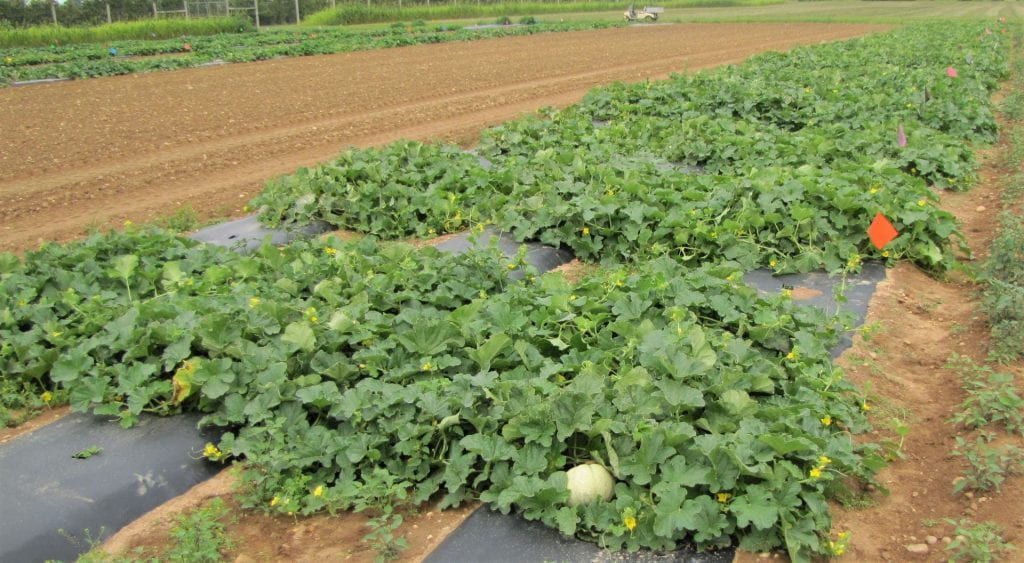
Figure 1. Photographs of plots of each variety in the powdery mildew experiment taken on 9 September, 1 day after the second harvest.


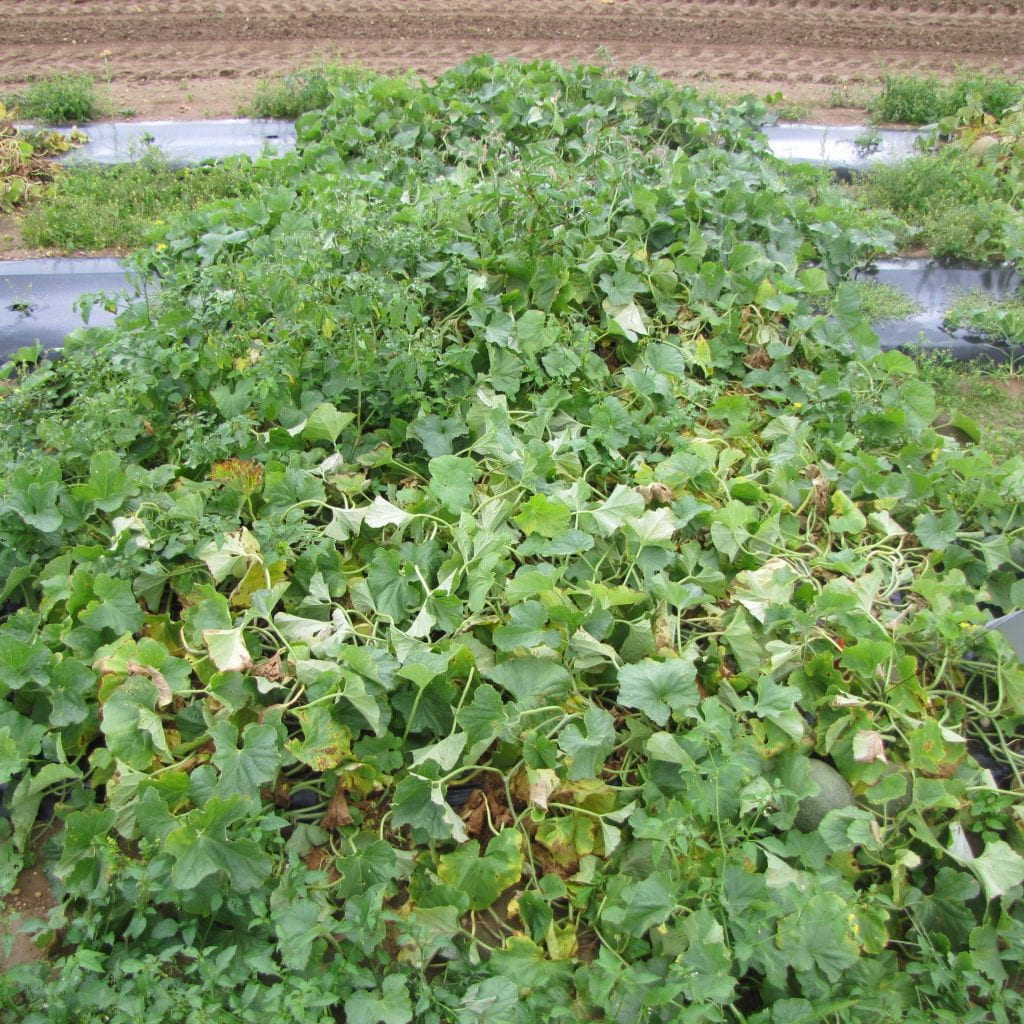
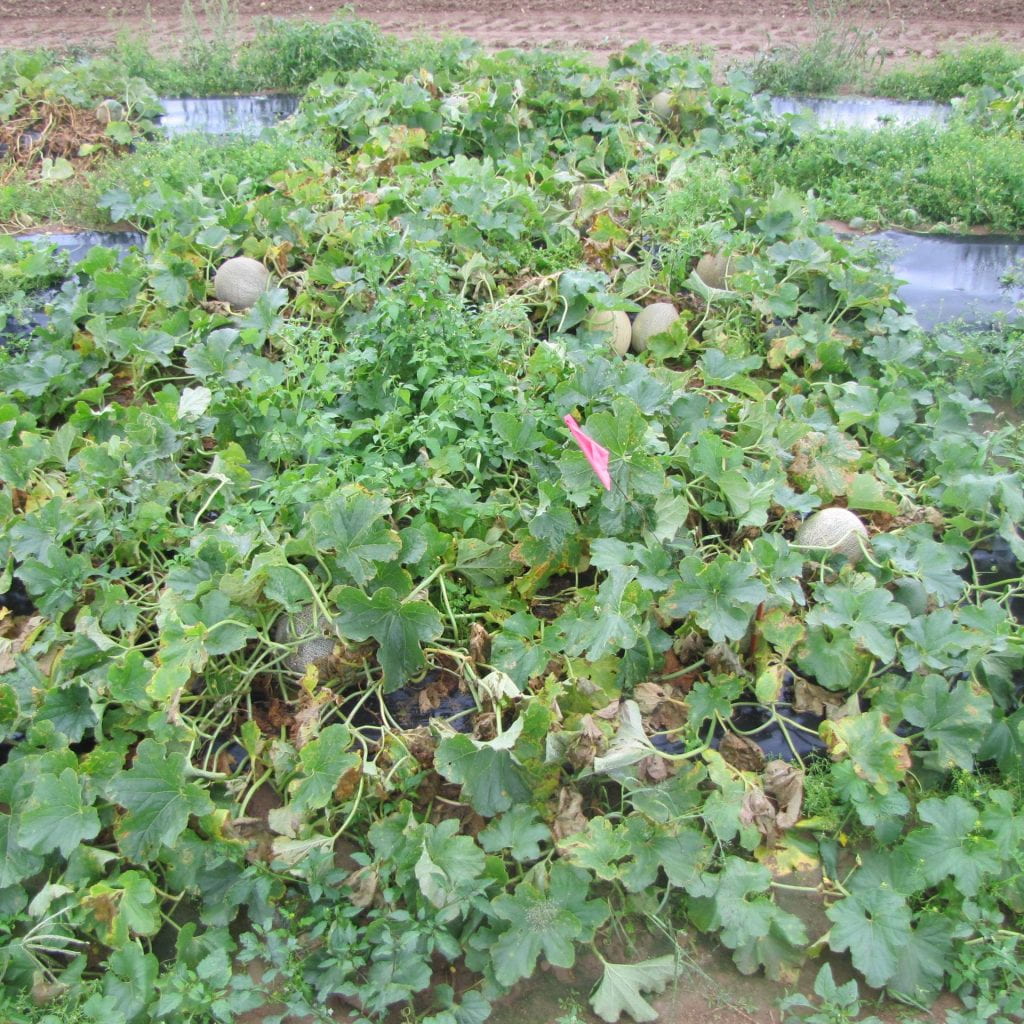

Figure 2. Fruit of cantaloupe varieties evaluated.
